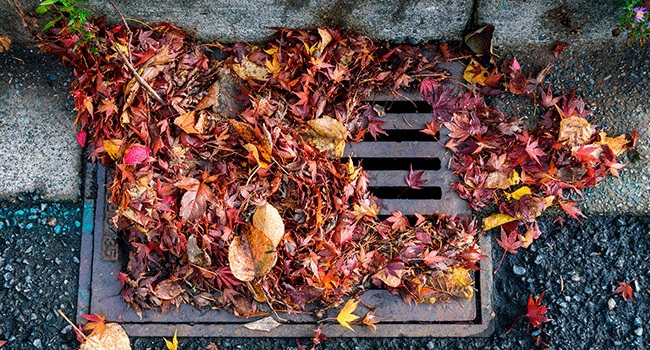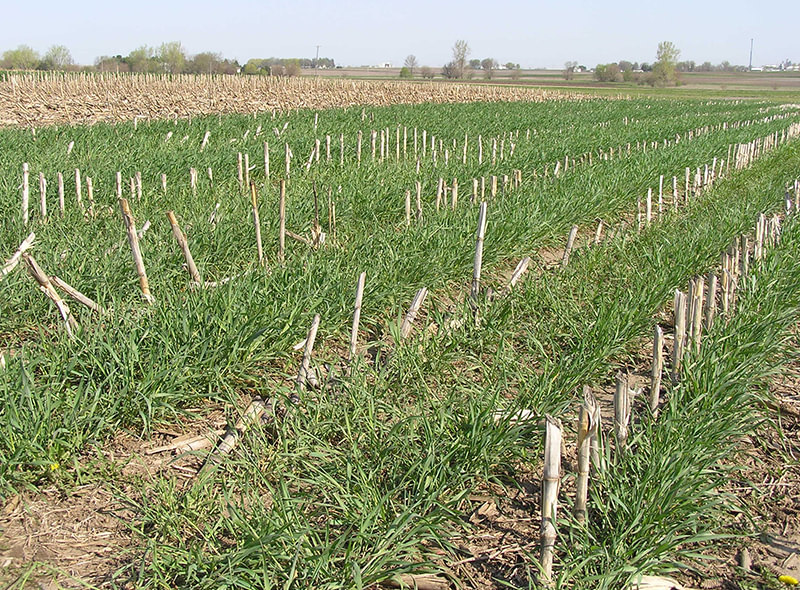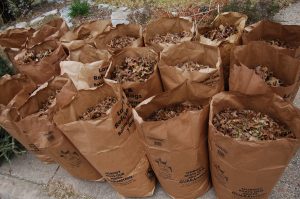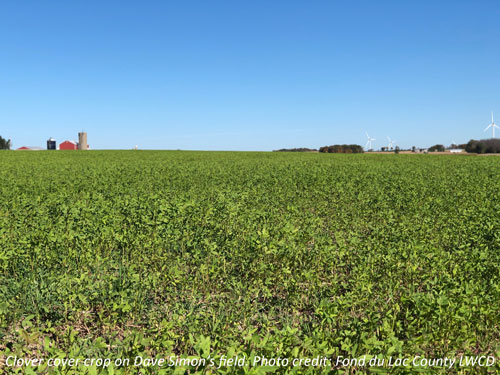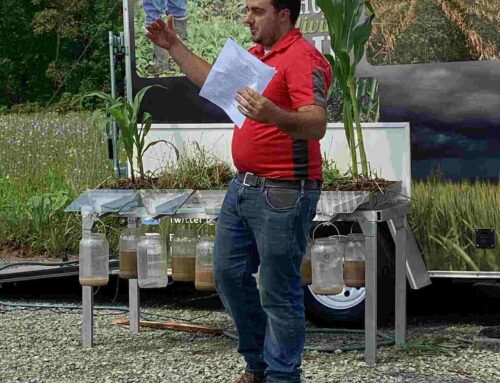Here in the midwest, we look forward to fall as a time to enjoy the cool (but not cold) temperatures, the beautiful colors of the changing leaves, and celebrating harvests. Farmers are busy in their fields harvesting and homeowners are cleaning up their yards and gardens. Many of us consider these fall activities as part of our normal, seasonal routine and don’t give them much thought other than as a task to be completed. However, these activities are key components in taking action for cleaner water!

Keep leaves on your yard, in planters as mulch, or bagged in compostable bags – not in the street
The Care You Take With Your Lawn Makes a Big Impact
Autumn leaf litter contributes a significant amount of phosphorus to the water that runs of yards and down storm drains, which then runs into waterways and lakes. A study conducted by the US Geological Survey (USGS) found that without removal, leaf litter and other organic debris in the fall contributed 56 percent of the annual total phosphorus load in urban stormwater compared to only 16 percent when streets were cleared of leaves prior to a rain event. Simply put, the majority of phosphorus, the nutrient that causes unwanted plant and algae growth in our waters, that comes from residential areas is from fall leaves and grass clippings. The study found that timely removal of leaf litter can reduce harmful phosphorus concentrations in stormwater by over 80 percent!
Keep the storm drains and waterways in your community clean and healthy this fall with a few simple steps:
- Utilize your town’s leaf collection or lawn waste sites for leaf disposal
- Compost your yard waste at home in an area away from storm drains
- Keep paved areas such as sidewalks and roads as well as storm drains clear of leaves
- Mow your leaves with a mulching mower and let them stay them on the lawn as a natural fertilizer
- Never dump leaves in wetlands or waterways
A Fall Ag Solution – Cover Crops
As you drive through rural areas, you may notice a variety of colors out on the fields. Some fields are still green with growing crops, some have bits of corn stalks left poking from the ground, and some are bare soil. In traditional farming, after the fall harvest of row crops, such as corn or soybeans, the soil surface of a field will be left bare until the next crop is planted and a new plant canopy is established. Here in Wisconsin, that next planting may be 5-7 months away. That’s a long time for the bare soil to be vulnerable to erosion caused by rainfall, snowmelt, or wind. For that reason, conservation-minded farmers utilize cover crops to have vegetation established and grown in the fall months, and remain in place during the winter.
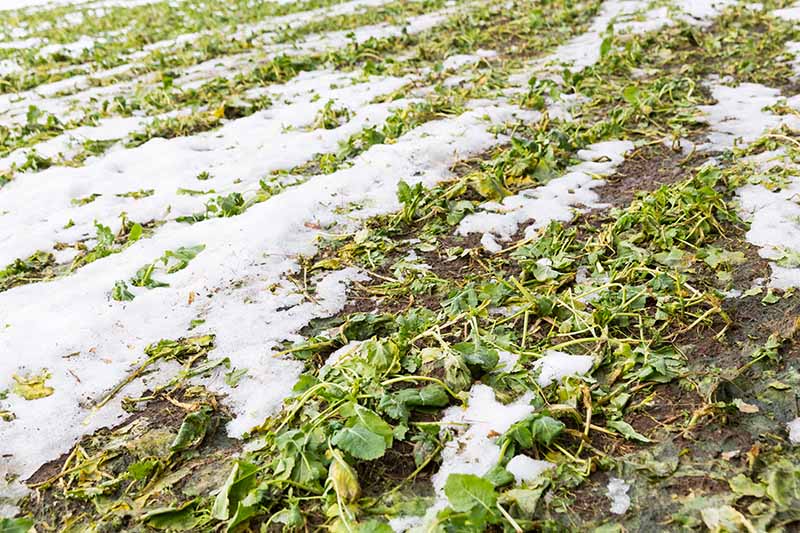
Cover crops planted in the fall keep soil in place throughout the winter
In the spring they are then killed and left on the surface as residue for conservation tillage or are incorporated into the soil. Properly planned and executed, cover crops will protect soil during this vulnerable period. This topsoil is full of nutrients such as phosphorous and nitrogen, so by keeping soil in place, these nutrients are kept on the land where they benefit crops and prevented from running into waterways where they contribute to degraded water conditions and algal blooms. Keeping soil in place also keeps pesticides, herbicides, and manure out of nearby streams, rivers, and lakes.
As a benefit to the farmer, cover crops can also:
- Slow the velocity of runoff from rainfall and snowmelt, reducing soil loss due to sheet and rill erosion
- Increase soil organic matter, leading to improvements in soil structure, stability, and increased moisture and nutrient holding capacity for plant growth
- Increase soil quality by improving the biological, chemical, and physical soil properties
- Store nutrients from manure until the following years’ crop can utilize them
- Reduce or mitigate soil compaction as deep tap roots can penetrate soft compacted layers in fall and spring
- Provide a natural means of suppressing soil diseases, pests and serve as a mulch or cover to assist in suppressing weed growth
- Provide high-quality material for grazing livestock or haying and can provide food and habitat for wildlife, beneficial insects, and pollinators
We all have a part to play in protecting our local waterways!
